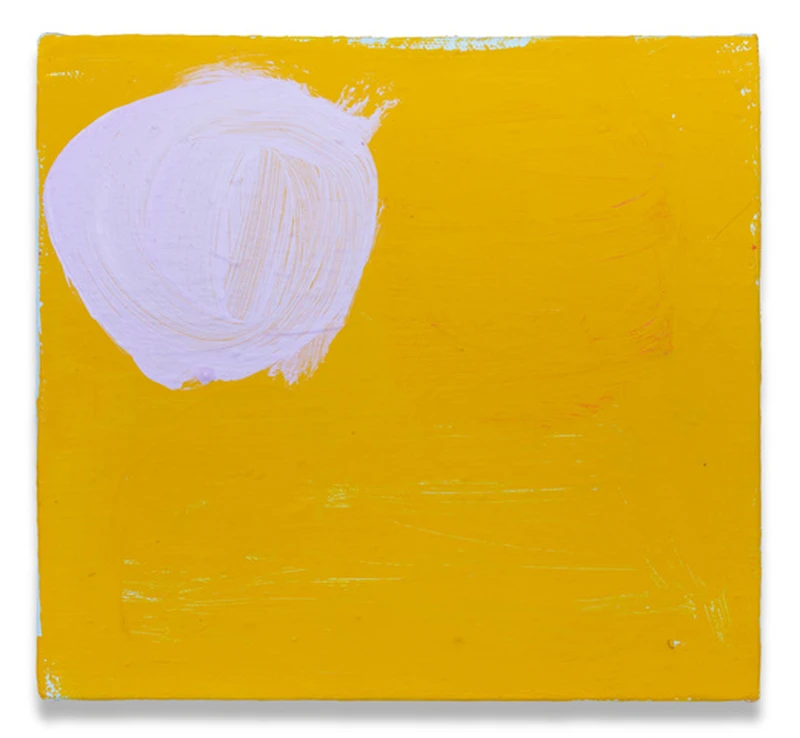'All that kale' by Jule Korneffel
4 Nov 2020-15 May 2021


Claas Reiss is pleased to announce its inaugural exhibition All that kale with six new paintings by the German/American artist Jule Korneffel in her first show in the UK.
Korneffel’s abstract style of inscriptive mark making follows a minimalist sensibility yet, by allowing underpainting to remain visible, the paintings reveal a process of reduction and the layering appears as a filtering of experiences. The picture plane is a lived experience in which she is able to arrive at precise forms and colours by what she calls ‘floating through its creation’.
A sun is the most recent and most reduced work with its one single mark on an ochre-ish ground. As in all her paintings, Korneffel imbued personal every day life experience into abstract language. ‘Suns are isolated and shine’ says Korneffel, referring to living in NYC during the Coronavirus pandemic.
As simple and easy-going as the paintings might appear on first impression, it takes time for them to entirely unfold, having grown over time to multiple layers of paint. John Yau describes colour as ‘the carrier of emotion’ in Korneffel’s paintings, slowly manifested through the repetitive adding and taking away. Like the mind, these paintings never seem to stand still. Their floating form is reduced thus open—ended, concrete but incomplete. The works are continuums of time and space, still remain fragments, and provide space for viewers’ experiences rather than suggesting a certain path or meaning. All that kale asks us to live in these paintings for a moment — making time to return to ourselves.
Jule Korneffel, born and raised in Germany, graduated from Kunstakademie Düsseldorf in 2008 as Meisterschüler under Tal R. In 2015 she moved to New York, where she feels the particular inspirations of Mary Heilmann and Agnes Martin. After graduating from the M.F.A. program at Hunter College in 2018, Korneffel quickly gained attention for emotional but reductive paintings: recent shows include Phase Patterns at ltd los angeles, Here comes trouble at Spencer Brownstone in NYC and Mini Me Mary in Dialogue with Mary Heilmann at Albada Jelgersma Gallery in Amsterdam.
***
The exhibition will be followed later this year by a publication with the following essay by Terry R Myers:
I’m all in when it comes to how the dividing line between abstraction and representation in painting was blurred if not erased across the dramatic rise and fall of modernism in the twentieth century, but there remains one aspect of the former that still doesn’t function in the latter. Back in 1999 (perfectly timed, I’d suggest) in the pages of Bomb Magazine, Ross Bleckner said this to Mary Heilmann: “One of the things I like about your work is there’s an anonymity to the imagery. You take boxes or squares or balls and stripes—basically you keep the vocabulary pretty elementary.” There may be ways in which a figurative or representational image can be anonymous, but none of them can compete with the “givenness” if not literal universality of geometry and mathematics. A geometric form may have a name but it has no identity. I know first-hand that turns on Heilmann (her response to Bleckner was a laugh), because such anonymity coupled with utter subjectivity is a funny thing that gives her work (along with Stanley Whitney’s) its recognizability and its potent agility.
In a relatively short time, Jule Korneffel has developed paintings that are very much identifiable as hers by also sticking to anonymity and making her versions of it her own. Yes, there are balls (or rough circles) on her canvases as there are in Heilmann’s or Whitney’s (and let’s not forget the late 1940s “dot” paintings of Francis Picabia because he’s the artist along with Duchamp who helps us get over ourselves when it comes to misidentifying originality as a limitation), but Korneffel’s play their own games, or perform their own tricks, or even create their own personas. And, not unlike the work of her predecessors, I’m especially drawn to what each painting of hers has that the others don’t, rather than those characteristics they so emphatically share. Honey Sugar Pop, 2019, for example, levitates three of its shapes (in the primary colors, making me remember that Mondrian’s work is uniquely anonymous itself, so it can’t only be about making gestural pictures) just up from the bottom edge of the canvas. Hovering above them on the left is another pink shape that looks as if it has just barely made it out the pink ground of the entire surface. So, yes, easy, but I think it is the graspability of that easiness that allows the paintings to sustain complexity. Take a small painting like A sun, 2020: at first glance it may look too quick but its toughness is what lasts. Just how fast was that light purple shape whipped into shape on the canvas’s rather gnarly ground? Why is the color of that ground closer to that of a sun than that purple shape that is shaped more like a sun? Was the ground-as-sun painted thickly to block out what looks like sky blue underneath? Nothing in the painting is just one thing, and one association leads to another, and another, and all the while anonymity is maintained. That, in the end, is the key achievement of Korneffel’s work.